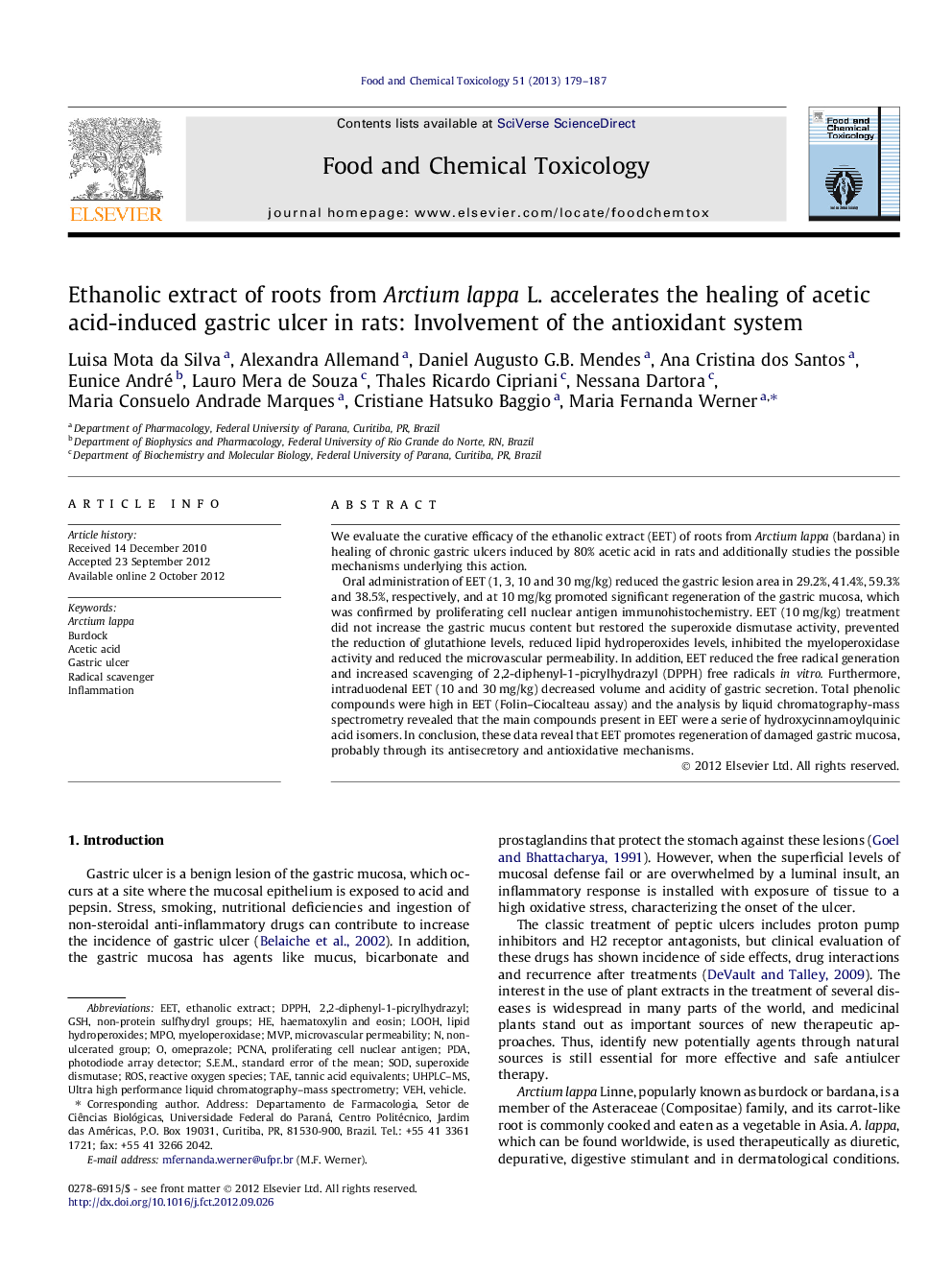| Article ID | Journal | Published Year | Pages | File Type |
|---|---|---|---|---|
| 5851880 | Food and Chemical Toxicology | 2013 | 9 Pages |
We evaluate the curative efficacy of the ethanolic extract (EET) of roots from Arctium lappa (bardana) in healing of chronic gastric ulcers induced by 80% acetic acid in rats and additionally studies the possible mechanisms underlying this action.Oral administration of EET (1, 3, 10 and 30Â mg/kg) reduced the gastric lesion area in 29.2%, 41.4%, 59.3% and 38.5%, respectively, and at 10Â mg/kg promoted significant regeneration of the gastric mucosa, which was confirmed by proliferating cell nuclear antigen immunohistochemistry. EET (10Â mg/kg) treatment did not increase the gastric mucus content but restored the superoxide dismutase activity, prevented the reduction of glutathione levels, reduced lipid hydroperoxides levels, inhibited the myeloperoxidase activity and reduced the microvascular permeability. In addition, EET reduced the free radical generation and increased scavenging of 2,2-diphenyl-1-picrylhydrazyl (DPPH) free radicals in vitro. Furthermore, intraduodenal EET (10 and 30Â mg/kg) decreased volume and acidity of gastric secretion. Total phenolic compounds were high in EET (Folin-Ciocalteau assay) and the analysis by liquid chromatography-mass spectrometry revealed that the main compounds present in EET were a serie of hydroxycinnamoylquinic acid isomers. In conclusion, these data reveal that EET promotes regeneration of damaged gastric mucosa, probably through its antisecretory and antioxidative mechanisms.
Graphical abstractDownload full-size imageHighlights⺠EET of roots from Arctium lappa accelerated the healing of chronic ulcers in rats. ⺠The regeneration of damaged gastric mucosa could be related to antioxidant mechanisms. ⺠EET is rich in phenolic compounds, indentified as a series of hydroxycinnamoylquinic acid isomers.
